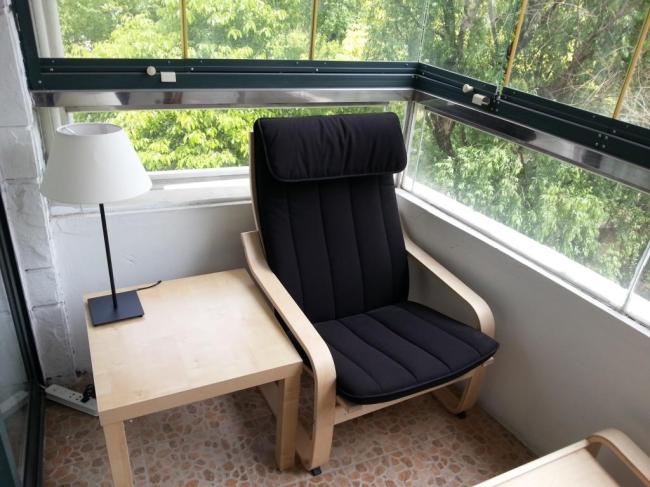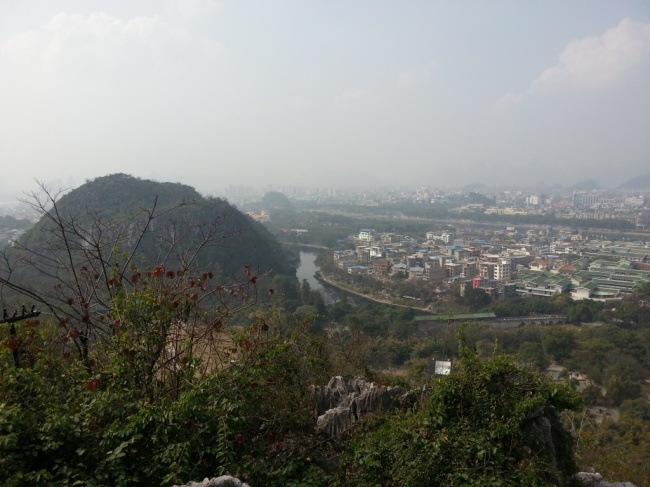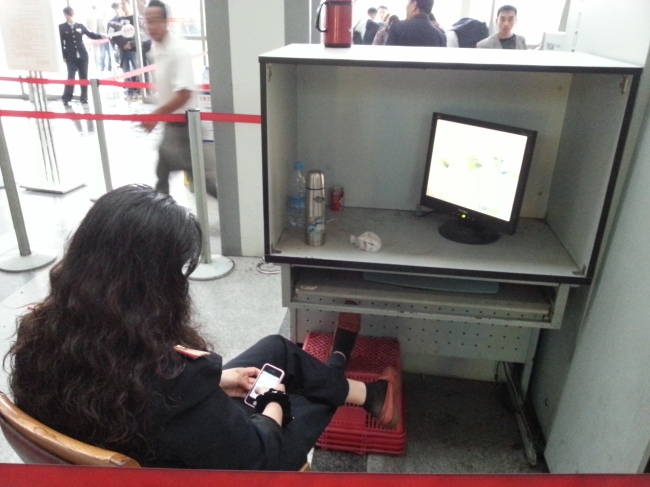If two years of urban planning school left me with anything, it is the privilege and responsibility of occasionally passing judgment on the quality of planning in Chinese cities. I may not be able to back up the claim that Guiyang is China’s worst-planned city, but seriously, it takes certain issues typical of Chinese city planning and stretches them to mind-boggling extremes.
A bit of context: Guiyang is the capital of the autonomous region of Guizhou. Guizhou is called an autonomous region and not a province because there are a lot of ethnic minorities there, though in practice the autonomy thing is kind of just for show. Guizhou is one of the poorest parts of the country and may actually claim the title of poorest province/region. That poverty is generally not on display in the capital of Guiyang, but after staying there a few days I could feel that it was a smaller, grittier place than most capitals – it felt like it was carved out of the rural backwater, rather than dominating it like the capitals to the east. Like any Chinese city worth its salt, though, Guiyang is growing and developing very fast, and has imbibed as orthodoxy many planning practices that worked well on the coast, and exaggerated them in some cases.
Case in point: Guiyang is building an entirely new version itself just outside the traditional city limits, and much larger than the old downtown. Every big Chinese city is building one of these “new cities” to accommodate future growth (and create massive opportunities for kickbacks between the cabal of government officials and real estate developers). I did not get much of a feel for Guiyang’s new city save that it is in a very early stage. Actually it mostly seems to be roads and other infrastructure these days, forming a massive grid within which there are a few land plots built up into shiny new high-rises and government buildings. But still, mostly empty.
It is deep, deep within this shell of a city that Guiyang has built its long-distance bus station. Yes, there seems to be only one. Other big cities have as many stations as there are points on the compass, as well as a big depot near the downtown train station and one or two newer, more modern ones in the periphery. Guiyang for some reason has deemed fit to do away with all the downtown ones and push all its chips into a single huge station in the middle of nowhere. This station is farther away from downtown than the damn Guiyang airport! Perhaps one day this station will be the centerpiece of a thriving, modern new city that has risen up all around it, but for now it’s so isolated to hardly feel part of Guiyang at all.
It makes a terrible first impression for those arriving by bus. Upon getting off, you are assaulted by touts peddling overpriced transportation, tours, and lodging. You think they are an overwhelming nuisance until you pass through a rattling set of turnstiles and realize they were just the touts clever enough to sneak inside the boarding area – the rest of them have set up a veritable carnival of exploitation just outside the station. Travelers wishing to avoid black market taxis, shady hotel operators, and sellers of strange-smelling meat on sticks must run the gauntlet to escape from them. I found no taxi line to speak of – just a mass of travelers pushing and shoving to haggle prices with an equal mass of cabs whose drivers had no intention using the meter to take one anywhere. They know a captive audience when they see it. Follow the signs to the city bus terminals in hopes of finding a fairer ride downtown, only to find nothing but disappointment there too – packed buses rolling away from platforms full of crowds deep enough to have filled them two or three times over. Electronic signs hanging from the ceiling note there is a forty-five minute interval between each departure – that’s the kind of wait you endure in a part of town so remote it barely qualifies as a suburb. As you look at the shivering crowd of people and try to estimate how many forty-five minute waits you will need to endure before departing. A few peasants bearing baskets work the line, selling corn to travelers grateful to avoid starving to death so close to their final destination.
Overall, the Guiyang bus station is a real kick in the teeth for people who bought bus tickets clearly marked “Guiyang” but are instead dropped off deep in the outskirts, potentially hours from their homes or hotels. Though very large, it also seems to have been built on the cheap, with little in the way of climate control. The picture above shows the ticket sales area early one morning – I hadn’t noticed my lens frosting over. The waiting rooms were spare, and the station seemed to outsource most amenities like dining to the mass of fruit sellers and food carts outside. Pro-tip: when planning your trip to Guiyang, take the train!
(On both my trips through the bus station, I skipped both the crooked taxis and the buses, and instead started marching in the general direction of downtown. It would have taken several hours to walk all the way there, but in both cases I managed to hail taxis which already had passengers – but whose drivers were willing to take me along for a very reasonable under the table fee. I considered myself lucky in both cases, since cars of any kind – let alone taxis – were hard to find deep in the underdeveloped new city).
Of course, I wouldn’t be crowning Guiyang as China’s worst-planned city if it just had problems with its new district and bus station. Every city has a few issues with those. Unfortunately, Guiyang’s downtown is something of a mess as well, particularly in terms of pedestrian planning. Simply put, central Guiyang is one of the most unpleasant urban environments I have ever tried to walk through in China. Almost every sidewalk – even on the many minor two-lane roads that run away from the main avenues – is fenced off from the street, including at intersections.
This was probably done to forcibly break local pedestrians’ habit of jay-walking. Now look – I’m no proponent of jay-walking and agree in principle its a dangerous practice that imperils drivers and walkers alike – but the car-driving elites and middle classes of cities like Guiyang bring the plague of jaywalkers upon themselves by planning cities as playgrounds for cars without making adequate provision for the vast majority of residents who still walk almost everywhere. If, as the city government, you space out designated pedestrian crossings as much as 500 yards apart, and then expect pedestrians to make detour after time-consuming detour just to walk in a straight line, then your automobile traffic deserves to be interrupted by the oppressed lower classes taking matters into their own hands. The fieldwork photographs of Western planners researching in China are replete with images of pedestrians breaking down or clambering over artfully pruned rows of shrubbery so that they can cross the road in a place that is convenient for them rather than the spot up the street where the city has seen fit to build a bridge. Good for them, I say. La Resistance lives on.
While in most cities this silent, populist jay-walking rebellion lives on in more-or-less peaceful coexistence with the car drivers, Guiyang has fought back with surprising ferocity, corralling pedestrians onto designated walkways and crossings with the most elaborate network of fences, tunnels, and bridges I’ve ever seen. The result is a pedestrian experience that seems inspired by nothing less than the 1930s Fritz Lang film “Metropolis”, in which the downtrodden masses are permitted to share the sunlight with the car-driving elites when it suits them, but are driven beneath the surface the moment their presence becomes an inconvenience.
Virtually every intersection downtown is crossed only by a bridge or tunnel. Mostly tunnels. And good gravy tunnels they are. They are shockingly deep – you will climb down the equivalent of a three or four-storey building just to walk up it again a few seconds later after you’ve passed through the tunnel. Multiply this by a half dozen or more intersections crossed on a given trek through the center, and you’ve just murdered the Guiyang market for Stairmasters in its infancy. Even more cruelly, most intersections are designed with a total of eight staircases (two for each corner), all of which curve inward at a 30-45 degree angle as you descend to the tunnel’s depths. Combine this the fact that most tunnels are laid out in the shape of squares with little or no signage, and I defy you to maintain your underground sense of direction such that you emerge at side of the road you intended. Most of the tunnels double as mini-shopping arcades, lined with kiosks selling drinks, snacks, trinkets, toys, and cheap electronics – convenient for some, but also discombobulating enough that I got lost over and over again. I climbed up and down a single tunnel three times once before I got where I was going. At first I thought that as a newcomer I was just unused to how the tunnels were laid out, but a local told me that the city was famous for having un-navigable underground crossings, and that even seasoned veterans got lost from time to time.
The one upshot from forcing pedestrians to endure all of this punishment should be that car traffic – free from interference – moves pretty smoothly. I must confess I did not spend enough time in taxis or on buses in Guiyang to tell for sure. From the outside looking in, the roads seemed fairly typical for big Chinese cities – gridlocked at rush hour, spotty at most other times.
I realize I’ve spent this article ranting about only two problems – the bus station and the downtown treatment of pedestrians. Probably not enough to argue definitively that it’s China’s worst-planned city. And anyway, if you are not among the unwashed masses who get around in buses and by foot, you may not even notice any of this. For most people, though, Guiyang gets a gentleman’s C at best.




















